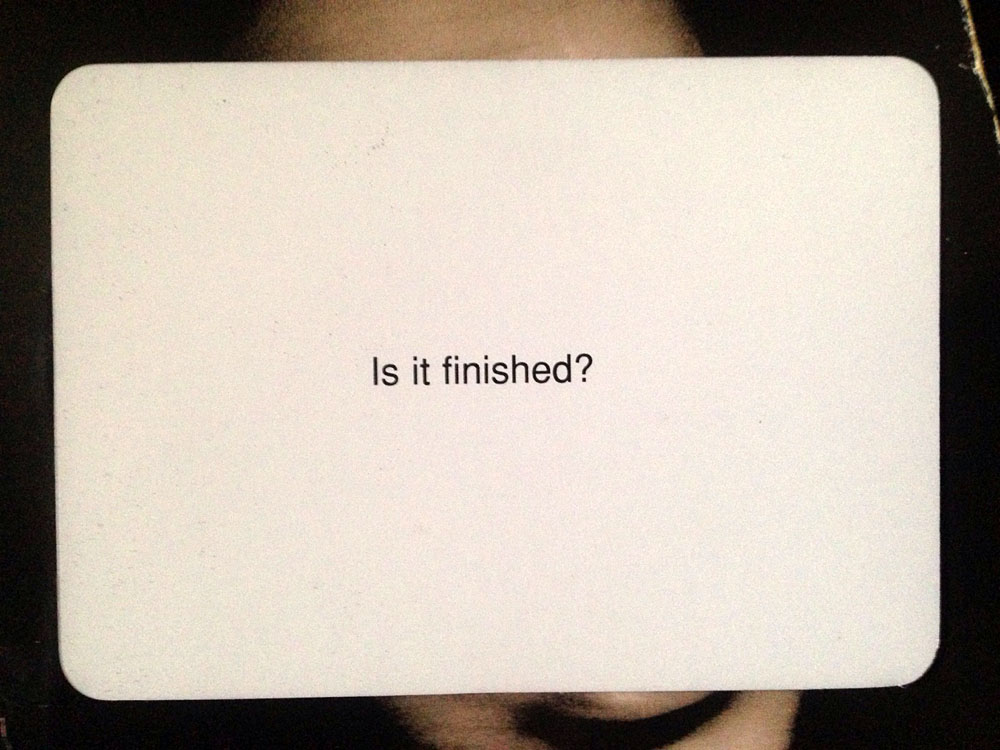

BRIAN ENO OBLIQUE STRATEGIES DOC SERIES
But, obviously nobody wants to do that! I will be talking later in this series about a film I made in 2016 which used a set of constraints called Network / Intersect, and you will be, over time, adopting a similar method to this in order to make the big, final thing you make on this course. The construction of quite extreme constraints is something I actively use in my own artistic practice, and something that if you want to read eighty thousand words about, you can read about in my PhD. Creating rules that push our creativity, using those rules to become more aware of the artifice surrounding the way that we work, and turning constraints into a critical tool. In each case the constraints of the film are clearly visible on the film itself. You could think of the new films as translations of the original, made in a completely different context.

Each film is interesting in its own right and adds something new to the original. Leth ended up travelling around the world to make new versions of a film he’d made before. In the early 2000s, Lars von Trier challenged Leth to remake this film five times, each time with a new obstruction, something to make it hard to make the film. Jørgen Leth was von Trier’s film mentor, and he made a film in the 1960s called The Perfect Human. Why am I asking you to do this? This idea is based on a film, called the Five Obstructions, by the directors Lars von Trier and Jørgen Leth. And please note, if you refresh the page, you can get a new set of constraints, but I recommend that you stick with the first ones you get. There are three constraints on the web-page you can choose to use two or three of them as you like. But I’d like you to go to the Scripted Design website for this page, where you’ll find a set of three constraints to apply to your re-make of the film you made yesterday. The source material - that is, someone else’s memory - will be the same. The theme and the topic will be the same. I would like you to re-make the film you made yesterday, but with two new constraints which will change the way you make it. Today, we’re going to be doing the same exercise as yesterday, but we’re introducing some new constraints. So just remember, if a free-write didn’t go well, there is nothing to worry about at all. You’ll probably spend more time tidying up, washing, using the toilet, or any one of the many other completely forgettable activities you do every day. That’s nought point three five percent (0.35%) of your day, not enough to be statistically significant at all. If not, don’t worry, you only lost five minutes doing it.
BRIAN ENO OBLIQUE STRATEGIES DOC FREE
If it revealed an idea to you, if it helped you to find a new perspective or free up a thought in some way, or connect concepts that weren’t connected before, then great, it’s doing its job. I hope that was five minutes of strange, enjoyable creativity. Five minutes, with the prompt mistranslation, starting now. Let’s get straight on with the free-write – five minutes of distraction-free associative writing, starting from a prompt.

You are listening, translating what I say into something that, I hope, makes sense to you. Spotify Apple Podcasts Google Podcasts Breaker Pocket Casts Anchor.fm RadioPublic Castbox RSS Subscribe to Scripted Design on your favourite podcast platform: Leave a voice message for the show! Subscribe


 0 kommentar(er)
0 kommentar(er)
